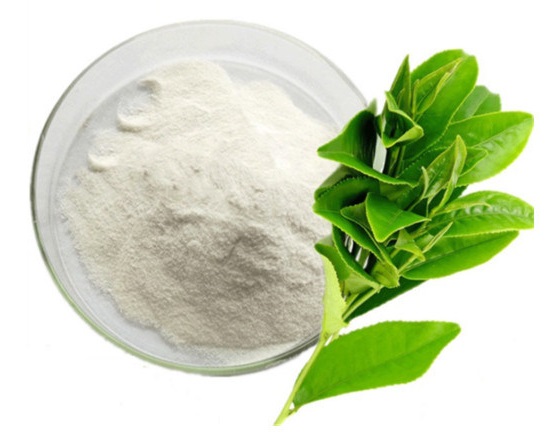I became a fan of energy drinks since my first sip of Red Bull in around 1998 and, as someone who is interested in formulations, I have followed the evolution of energy drink formulations very closely.
Energy drinks were first introduced as a way to increase alertness and energy levels, primarily through the use of caffeine and supporting ingredients like taurine and B-Vitamins.
However, as the market evolved, consumers started to demand more than just a simple caffeine boost. This is where additional ingredients like nootropics came into play.
Furthermore, an entirely new category of beverages also naturally evolved from energy drinks, without caffeine and instead intended to promote a state of relaxation and calmness. But that’s a topic for another article.

Krating Daeng, famous energy drink in Thailand and South East Asia and the predecessor of Red Bull. Image Source: www.tcp.com
What are Nootropics?
Nootropics are a class of ingredients that are designed to enhance cognitive function, including memory, focus, and overall brain performance. The original nootropic in energy drink is caffeine but over time additional ingredients with a nootropic effect also made it to energy drink formulations, including alternative/ novel forms of caffeine.
While the specific combination of nootropic ingredients can vary from brand to brand, there are some common ingredients that are frequently found in energy drinks. These are as follows:
- Natural caffeine forms: many energy drinks use alternative forms of caffeine such as guarana as a natural source of caffeine to differentiate themselves from other energy drinks. Guarana is a common ingredient in energy drinks due to its caffeine content and natural perception. The issue with guarana is that it is relatively low in caffeine (1g of guarana extract raw material can yield about 200mg caffeine) and to yield sufficient caffeine alone from guarana, a large amount of the extract will be necessary which can affect the taste of the drink. That is why guarana is often used in combination with synthetic caffeine anhydrous.

Guarana extract, a natural source of caffeine.
- Extended release caffeine: I came across zümXR in 2014. It is a type of extended-release caffeine that is designed to provide a more sustained energy boost than regular caffeine. The “XR” in zümXR stands for “extended-release,” indicating that the caffeine is released slowly over time rather than all at once. This slow release of caffeine can provide a longer-lasting energy boost compared to other forms of caffeine.
- L-Theanine: L-Theanine is a non-protein amino acid found in tea leaves, known for its calming effects on the mind and body. It is often combined with caffeine in energy drinks and dietary supplements due to its synergistic effects with caffeine. L-Theanine and caffeine work together to enhance cognitive performance and increase mental alertness, while reducing the jitters and anxiety that can be associated with high caffeine consumption. Several studies have shown that L-Theanine and caffeine together can improve cognitive performance, including attention and memory, and lead to faster reaction times on cognitive tasks.

L-Theanine, an amino acid naturally found in tea leaves is increasingly being used in energy drinks to moderate the potential side effects of caffeine.
- Taurine is an amino acid that has been shown to improve cognitive function and reduce fatigue. One way that taurine may work synergistically with caffeine is by helping to reduce the negative side effects of caffeine, such as jitteriness, anxiety, and nervousness. Studies have suggested that taurine can help to reduce the overstimulation. When taken in conjunction with caffeine this may allow individuals to experience the energizing effects of caffeine without the negative side effects.
- Carnitine: an amino acid derivative that is sometimes added to energy drinks and supplements to help with energy metabolism and athletic performance. One specific form of carnitine that is commonly used in these products is acetyl-L-carnitine (ALCAR). ALCAR is thought to have antioxidant properties that can help protect cells from oxidative stress, as well as potentially enhance cognitive function and reduce fatigue.
- Alpha GPC: stands for alpha glycerophosphocholine, an ingredient that is believed to support the production of acetylcholine, a neurotransmitter that is important for learning, memory, and muscle function. Some studies have suggested that alpha GPC supplementation may improve cognitive function, reduce fatigue, and enhance physical performance in athletes. When combined with ALCAR, alpha GPC may have a synergistic effect on cognitive function and athletic performance

Nutritional Facts table of an energy drink with added nootropics. Brand: Koios. (https://shop.koiosbeveragecorp.com). No affiliation with brand.
- B-complex vitamins: Energy drinks usually contain multiple B-vitamins (B-complex) which are essential for brain function and can help to reduce fatigue and improve mental clarity. One of the most common B-vitamins in energy drinks, Vitamin B6 (pyridoxine) is involved in the synthesis of neurotransmitters, such as serotonin and dopamine, which are important for mood regulation and cognitive function. B-vitamins can also work acutely to boost cognitive function and reduce mental fatigue by improving energy metabolism and boosting blood flow (Dodd et al, Kennedy). This is a reason why I always feature it in neurological formulations like study support drinks and prewokout drinks.
Where next?
Some possible directions that the energy drink industry could take include:
- Sugar-free: Sugar-free energy drinks have been popular for several years, and this trend is likely to continue. Many consumers are looking for healthier alternatives to traditional energy drinks that are high in sugar and calories. Sugar-free energy drinks typically use artificial sweeteners such as aspartame, sucralose, or stevia to provide a sweet taste without adding calories. Traditional sugared energy drinks brands like Monster is already offering a greater variety of sugar-free energy drinks.

Zevia, an example of a brand that launched with sugar-free carbonated drinks that recently diversified into sugar-free energy drinks. The sugar-free trend is likely to expand. Source: Amazon.com. Disclaimer: No affiliation with brand.
- Smaller can sizes: Smaller can sizes are becoming more popular in the beverage industry as consumers are becoming more health-conscious and interested in portion control.
- Herbal nootropics? Herbal nootropics are becoming increasingly popular as consumers look for more natural and healthy alternatives to traditional synthetic nootropics. However, there are some challenges associated with the use of herbal nootropics: lack of research into their effects, potential interaction with medication, potential negative effect on taste especially if adequately dosed.
Concluding thoughts
The evolution of energy drinks from a simple caffeine boost to incorporating nootropic ingredients reflects a shift towards a more health-conscious and performance-driven consumer base. While caffeine remains a primary ingredient in many energy drinks, the inclusion of nootropics is a response to the growing interest in cognitive enhancement and mental clarity.
As the popularity of nootropics continues to grow, it is likely that energy drink companies will continue to experiment with new ingredients and formulations to provide consumers with a range of options. However, it is important to be aware of the potential risks associated with the use of nootropics and to approach them with caution.
Overall, the evolution of energy drinks from caffeine boost to nootropics highlights the importance of staying up-to-date with the latest trends and research in the beverage industry to meet the changing demands and preferences of consumers.
Thanks a lot for reading the article. If you found it helpful, please share it!

To view my Professional Profile on LinkedIn: please click here
To view my Scientific Publications on PubMed: please click here
To get in touch, please write to: info@supplementscientist.com
Follow supplementscientist.com on Facebook: please click here
Medical disclaimer
The information presented on this website is intended for adults 18 or over. Its aim is purely educational and does not constitute medical advice. Please consult a medical or health professional before you begin any program related to exercise, nutrition, or supplementation especially if you have a medical condition. If you consume any product mentioned on our site, you do so on your own free will, and you knowingly and voluntarily accept the risks. © 2023. Supplementscientist.com
Feature image: Image by KamranAydinov on Freepik
References:
Dodd, F.L.,et al. (2020). Acute and chronic effects of multivitamin/mineral supplementation on objective and subjective energy measures. Nutrition & Metabolism, 17(1). doi:https://doi.org/10.1186/s12986-020-00435-1.
Kennedy, D. (2016). B Vitamins and the Brain: Mechanisms, Dose and Efficacy—A Review. Nutrients, [online] 8(2), p.68. doi:https://doi.org/10.3390/nu8020068.
White, D.J., et al. (2016). The effect of a single dose of multivitamin and mineral combinations with and without guaraná on functional brain activity during a continuous performance task. Nutritional Neuroscience, 20(1), pp.8–22. doi:https://doi.org/10.1179/1476830514y.0000000157.







Leave a Reply